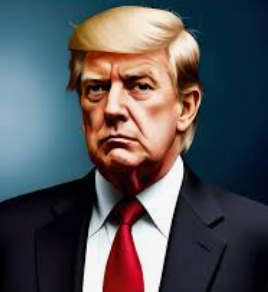$SPY $DXY $BTC
#Trump #Economy #EconomicSecurity #ColdWar #USChina #FinancialMarkets #Geopolitics #StockMarket #Crypto #GlobalTrade #Inflation #EconomicPolicy
The challenges of managing an “economic cold war” have surfaced sharply in recent years, with geopolitical tensions rising between the United States and its trade partners, particularly China. As policymakers attempt to shift priorities to safeguard the U.S. economy, the president’s influence on this matter remains both critical and limited. From 2017 to 2021, former President Donald Trump sought to use tariffs, sanctions, and other tools to redefine America’s trade policies, branding his approach as one that aimed to secure the nation’s economic future. However, financial markets and analysts contend that the instruments available to a president in such scenarios often fall short of achieving long-term economic security. The complex interplay of global supply chains, international alliances, and domestic political resistance poses significant barriers to unilateral action.
Trump’s pursuit of an “economic security state” aimed to reduce reliance on foreign nations, particularly in sectors deemed strategically important like technology and semiconductors. Policies including tariffs on Chinese goods and restrictions targeting companies like Huawei were designed to curb competition and protect intellectual property. However, these measures often triggered unintended ripple effects in global markets. For instance, tariffs increased costs for both American companies and consumers, fueling inflationary pressures that strained the broader economy. Financial actors, including investors in $SPY and similar index funds, weighed these policy shifts heavily, leading to heightened volatility. Moreover, the U.S. dollar index ($DXY) experienced increased fluctuations as trade tensions affected capital flows between the world’s two largest economies. Critics argued that while the objectives of such strategies were valid, the execution strained American businesses more than their foreign counterparts.
Current analysis suggests that economic policies driven by executive orders lack the sustainability needed to counteract long-term structural shifts in global trade. The global economy today is deeply interconnected, with many multinational corporations relying on complex supply chains spanning multiple countries. For instance, while trade wars gained headlines, companies like Apple ($AAPL) or Tesla faced operational hurdles due to dependency on Chinese suppliers. Similarly, volatility often spilled over into alternative assets like cryptocurrencies ($BTC), as investors sought refuge from traditional markets amid uncertainty. As the U.S. government re-evaluates its policies, there is a growing consensus that implementing coordinated multilateral measures, rather than unilateral tactics, might yield more effective results in fostering economic resilience.
The broader implications of such strategies have significant ramifications for financial markets, geopolitics, and overall economic stability. As administrations attempt to bolster the U.S.’s economic standing, investor confidence plays a pivotal role. Ambiguous or reactionary policies could weigh heavily on indices such as the S&P 500, while dollar strength or weakness will continue to impact trade balance and inflation metrics. Moving forward, addressing these economic pressures will likely require collaboration among policymakers, private sector leaders, and global allies. While the desire to protect the U.S. economy is bipartisan, executing strategic and sustainable measures that account for broader market realities remains an enduring challenge, regardless of who holds the presidency.







Comments are closed.